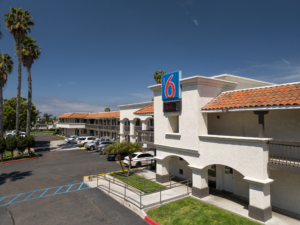How Meetings and Events Helped Revive San Diego’s Economy
How Meetings and Events Helped Revive San Diego’s Economy
International Meetings Review
09/02/15
How Meetings and Events Helped Revive San Diego’s Economy
http://www.internationalmeetingsreview.com/california/how-meetings-and-events-helped-revive-san-diegos-economy-101990
The downtown San Diego hotel market lives on group business and leisure demand. The city’s bayfront convention center annually hosts nearly 50 shows and conferences, drawing more than 500,000 attendees. And the temperate southern California climate is a magnet for sun-seeking tourists.
Like the rest of the United States, the San Diego market suffered during the last recession. Recovery was slower than for other major hotel markets, said Aaron Solaimani, an associate in the San Francisco office of HVS.
“The reason is because San Diego doesn’t have an incredibly strong base of commercial roomnights,” he said. “It does draw business from the government segment, which is a type of commercial demand but generally lower-rated because of government per-diems.”
Following the slow climb back from the downturn, the market has performed well in recent years with strong increases in performance metrics forecast through 2020. According to a Tourism Economics study, citywide occupancy was 74.6 percent in 2014 and is forecast to rise to 77.7 percent this year and above 78 percent in 2016 and 2017.
Average daily rates will increase 6.1 percent this year and are expected to rise 6 percent in 2016. Revenue per available room will rise 10.5 percent in 2015 and is projected to increase 6.6 percent next year.
Thank you Comic-Con
The centerpiece of the city’s convention business is the annual Comic-Con event, which draws 130,000 attendees and accounts for nearly 60,000 hotel roomnights.
The city was in danger of losing the event to Los Angeles or Anaheim, Calif., due to insufficient space in the convention center. A planned $520-million expansion of the venue was put on hold following a court ruling that the financing plan for the expansion was unconstitutional.
The city’s tourism officials secured agreements from local hotels to devote more of their space for Comic-Con events, and as a result in July the group signed a deal to keep the event in San Diego at least through 2018.
While downtown San Diego relies on group business to fill hotel rooms, commercial demand generators, including medical and technology businesses, in submarkets such as Mission Valley and La Jolla draw more traditional business transient customers to hotels in those locations.
A strong pipeline
The San Diego hotel development pipeline comprises 34 hotels with 8,090 rooms. Twenty-three of those properties are either under construction or will start construction in the next 12 months.
About half of the projects (16) in the pipeline are in the San Diego central business district. One new property, the 96-room Hotel Z in the Gaslamp District, opened in downtown so far this year.
A strict regulatory environment makes development a challenge, said Solaimani, but many opportunities exist in the market, especially downtown.
“The prime downtown hotels are running in excess of 80 percent occupancy and in excess of 90 percent in peak months, which suggests significant unaccommodated demand in the market,” he said. “However, it takes so long to develop in San Diego that by the time hotels get out of the ground, trends might have turned for the worse. As a result, it’s very difficult to time your development to meet rising trends.”
The Carlsbad/Oceanside submarket in northern San Diego County has nine hotels, with 1,540 rooms in the pipeline and three properties scheduled to open this year. About half of hotels in the San Diego pipeline are in the upscale segment, with 10 properties as yet unbranded.
Lots of deals
In the first half of 2015, 16 hotels were sold in San Diego County, according to a study by Atlas Hospitality Group. The number of sales was down from 19 transactions during the same time last year.
In March, Blum Capital Group acquired the 249-room Grand Del Mar north of the city and rebranded it as a Fairmont. Two significant sales happened during the second quarter. A joint venture between Walton Street Capital and JMA Ventures paid $118 million, or $282,944 per room, for the 417-room Hyatt Regency at Avertine in La Jolla. Oak Coast Properties paid $49.3 million, or $224,886 per room, for the 219-room DoubleTree Hotel Circle.


